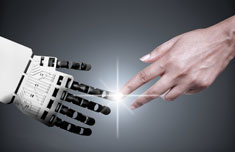The rise of machine translation has left human translators with an uncertain future. But the translation industry cannot depend on machines alone and won’t be able to any time soon. So where do translators find their new place?
In 2015, social media sites all over the world were in a frenzy over Taco Bell Japan’s new website. Taco Bell restaurants were re-opening in the country and the team had just launched a machine-translated site featuring the menu items. What was intended as a globalization effort to bring American fast food (and fast food product names) to Japan turned into a PR nightmare. A signature item on the menu, "Cheesy Fries", was advertised as "a low-quality fleece". The "Crunchwrap Supreme Beef" had been translated to "Supreme Court Beef". Customers were both amused and confused. And while Taco Bell received a great deal of press for their Japan launch, it wasn’t necessarily the type of press they were seeking.
Of course, not all machine translations (MT) suffer such blunders, and, in fact, many MT tools have become extremely sophisticated; however, in recent years, the rise of MT has made ...
Read more after login
tekom members can log in directly with their "My tekom" access data.
You are not yet a tekom member, but would like to read one or more articles in full? Then you have the opportunity to register on the internet portal of the technical journal 'tcworld' without obligation. Once you have registered, you can select any three specialist articles and view them in full for a period of two months. The selection will then be deleted and you can select three new articles for the next two months.
As a tekom member you benefit from the following advantages::
- Online access to all articles of the trade magazine 'tcworld magazine'
- Exclusive specialist articles from all areas of technical communication
- Regular new articles from over 300 authors
- The technical journal 'tcworld magazine' as a printed edition
- Reduced admission prices to tekom conferences
- Membership fees for tekom publications
- Access to 'my tekom', the web forum with job offers / job requests, appointments, expert advice, service provider file and much more
Login
Registration
Promised: The trade magazine 'tcworld magazine' is the best we have. And we don't make the choice easy for ourselves. Every month, the editorial staff of the technical journal 'tcworld magazine' publishes the latest articles by renowned authors. This demanding selection is available exclusively to members of tekom (as usual, including the printed edition).
The trade magazine 'tcworld magazine' stands for intelligently prepared specialist articles, texts written to the point, informative content, surprising insights, international perspectives and communicates technical communication in an understandable, fast, clear and uncomplicated way - exclusively for you.

